AFRO AMERICAN HAIR TRANSPLANT
Challenges and Considerations in African American Hair Transplantation
Hair transplantation is a sophisticated procedure that requires a deep understanding of various hair types to achieve optimal results. Among these, African American hair presents unique challenges that demand a higher level of precision, expertise, and care compared to non-curly, straight hair types. This blog delves into the reasons behind these challenges and the methodologies employed to address them.There are two primary techniques used for extracting hair follicles in hair transplantation: Follicular Unit Transplantation (FUT) and Follicular Unit Extraction (FUE). FUT, the older of the two methods, involves removing a strip of scalp tissue from the donor area, from which hair follicles are then dissected and implanted into the recipient area. This method, while effective, can result in a linear scar, making it less desirable for patients who prefer to wear their hair short.FUE, on the other hand, is the more advanced and preferred technique, especially for patients with curly hair such as African Americans. FUE involves individually extracting hair follicles using a specialized punch device. This method leaves minimal scarring and is favored for its ability to extract a maximum number of hair grafts with precision. Due to its efficiency and less invasive nature, FUE has become the go-to method for extraction in African American patients.
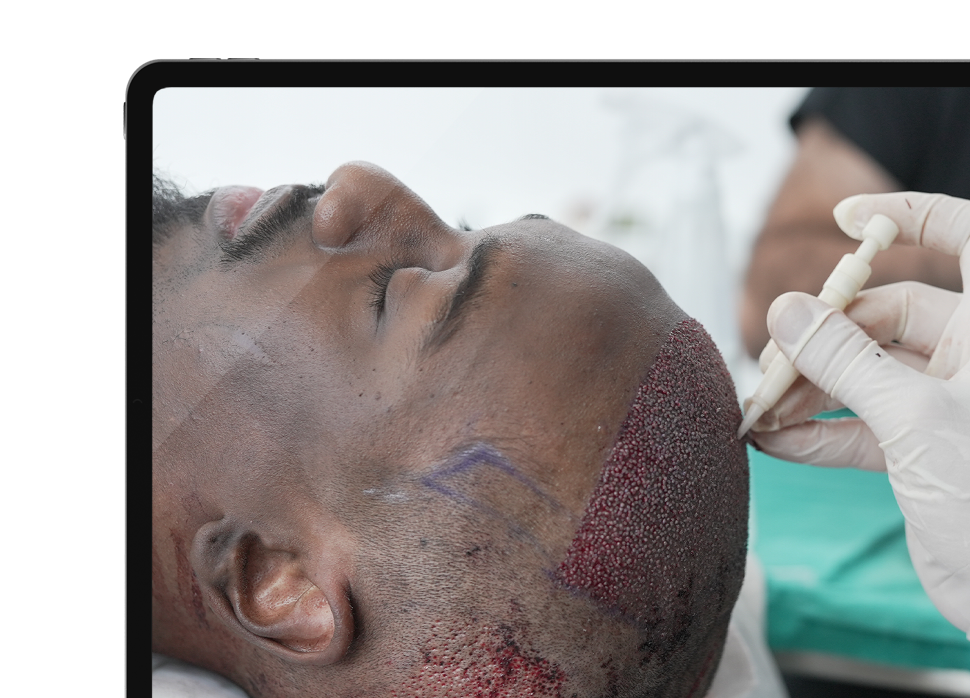
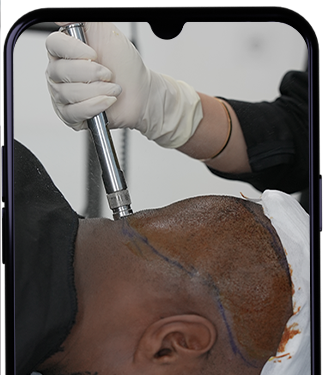
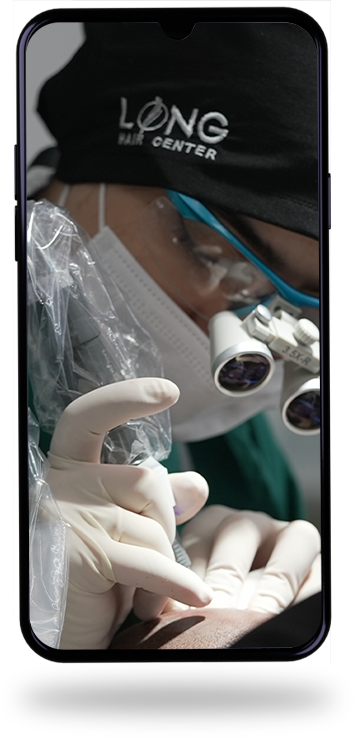
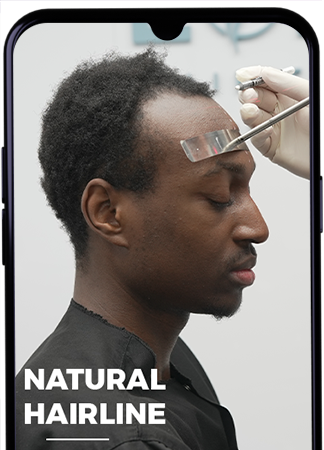
The Complexity of Extracting Afro-Textured Hair Grafts
One of the most significant differences between African American hair and other hair types is the unique structure of Afro-textured hair. Unlike straight or wavy hair, Afro hair is curly both above the skin's surface and beneath it. This characteristic makes the extraction of hair grafts more complex and requires a more meticulous approach.When performing hair transplants on individuals with straight hair, the punch device used for extraction typically has a diameter of 0.9 mm and a length of approximately 4 mm. This straight rotating punch is sufficient for extracting hair follicles in a non-curly pattern. However, this tool is not suitable for Afro-textured hair due to the hair’s natural curl beneath the skin’s surface. The curliness of Afro hair follicles under the skin means that using a standard punch could damage the follicles, leading to a lower success rate and potentially harming the overall outcome of the transplant.To accommodate the curly nature of African American hair, the punch used for extraction must be adjusted. Specialists often employ a punch with a shorter length and a modified diameter that aligns with the curl pattern of the hair follicle. This adaptation allows for the safe extraction of the grafts, ensuring that they remain intact and healthy, which is crucial for the success of the transplant. . .
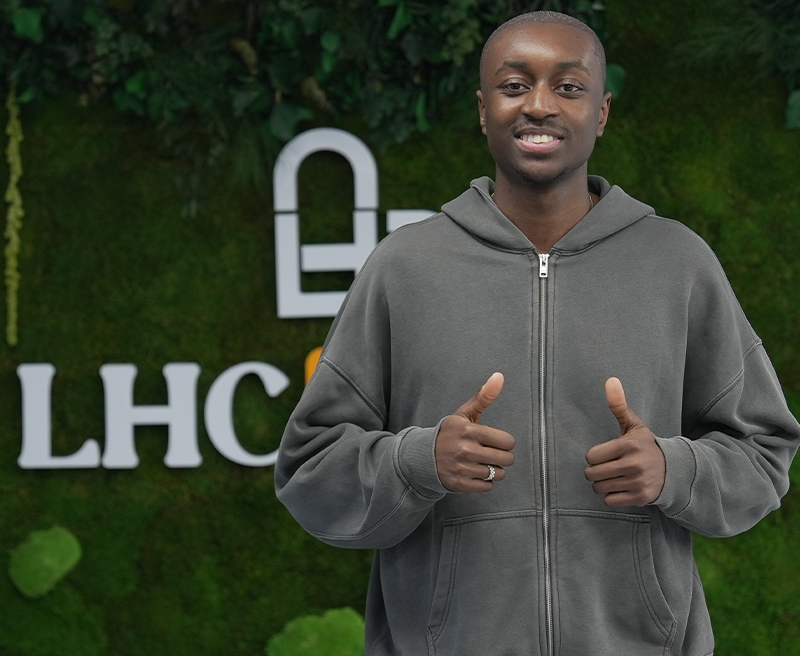
The Advantage of Afro Hair in Achieving Greater Density
Afro-textured hair has a distinct advantage over straight hair types when it comes to achieving density after transplantation. Due to the natural curl and thickness of Afro hair, fewer grafts are needed to create the appearance of fullness. In a recent study, it was observed that 3,500 grafts in an African American hair transplant could produce results equivalent to 5,000 grafts in a patient with straight hair. This means that African American patients can achieve the desired density with fewer grafts, making the procedure more efficient and often more cost-effective.
However, the key to achieving this density lies in the quality and health of the extracted grafts. If the grafts are damaged during extraction, the success rate of the transplant diminishes, leading to less satisfactory results. Therefore, it is imperative that the surgeon handling the procedure has substantial experience and a deep understanding of Afro-textured hair. The careful and precise extraction of each graft ensures that the hair roots remain viable, leading to better growth and a more natural looking result post-transplant.
Hair transplantation in African American patients is a specialized field that requires a nuanced approach due to the unique structure of Afro textured hair. The complexity of the procedure, from the modified extraction techniques to the careful handling of grafts, underscores the importance of choosing a highly skilled and experienced hair transplant specialist. While the process may be more challenging and time consuming compared to non-curly hair transplants, the results can be equally, if not more, rewarding. Afro hair's natural density and curl pattern provide distinct advantages, allowing patients to achieve a fuller, more natural look with fewer grafts. However, this success hinges on the expertise of the surgeon, making it crucial for patients to seek out professionals who are well-versed in the intricacies of African American hair transplantation.
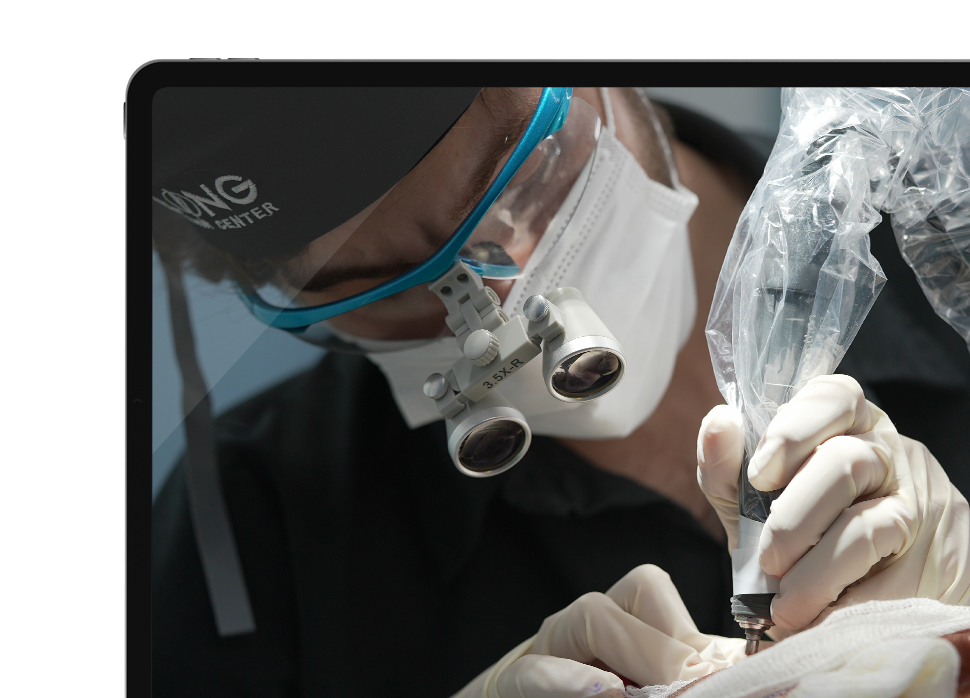
Challenges and Considerations in African American Hair Transplantation
Hair transplantation is a sophisticated procedure that requires a deep understanding of various hair types to achieve optimal results. Among these, African American hair presents unique challenges that demand a higher level of precision, expertise, and care compared to non-curly, straight hair types. This blog delves into the reasons behind these challenges and the methodologies employed to address them.There are two primary techniques used for extracting hair follicles in hair transplantation: Follicular Unit Transplantation (FUT) and Follicular Unit Extraction (FUE). FUT, the older of the two methods, involves removing a strip of scalp tissue from the donor area, from which hair follicles are then dissected and implanted into the recipient area. This method, while effective, can result in a linear scar, making it less desirable for patients who prefer to wear their hair short.FUE, on the other hand, is the more advanced and preferred technique, especially for patients with curly hair such as African Americans. FUE involves individually extracting hair follicles using a specialized punch device. This method leaves minimal scarring and is favored for its ability to extract a maximum number of hair grafts with precision. Due to its efficiency and less invasive nature, FUE has become the go-to method for extraction in African American patients.
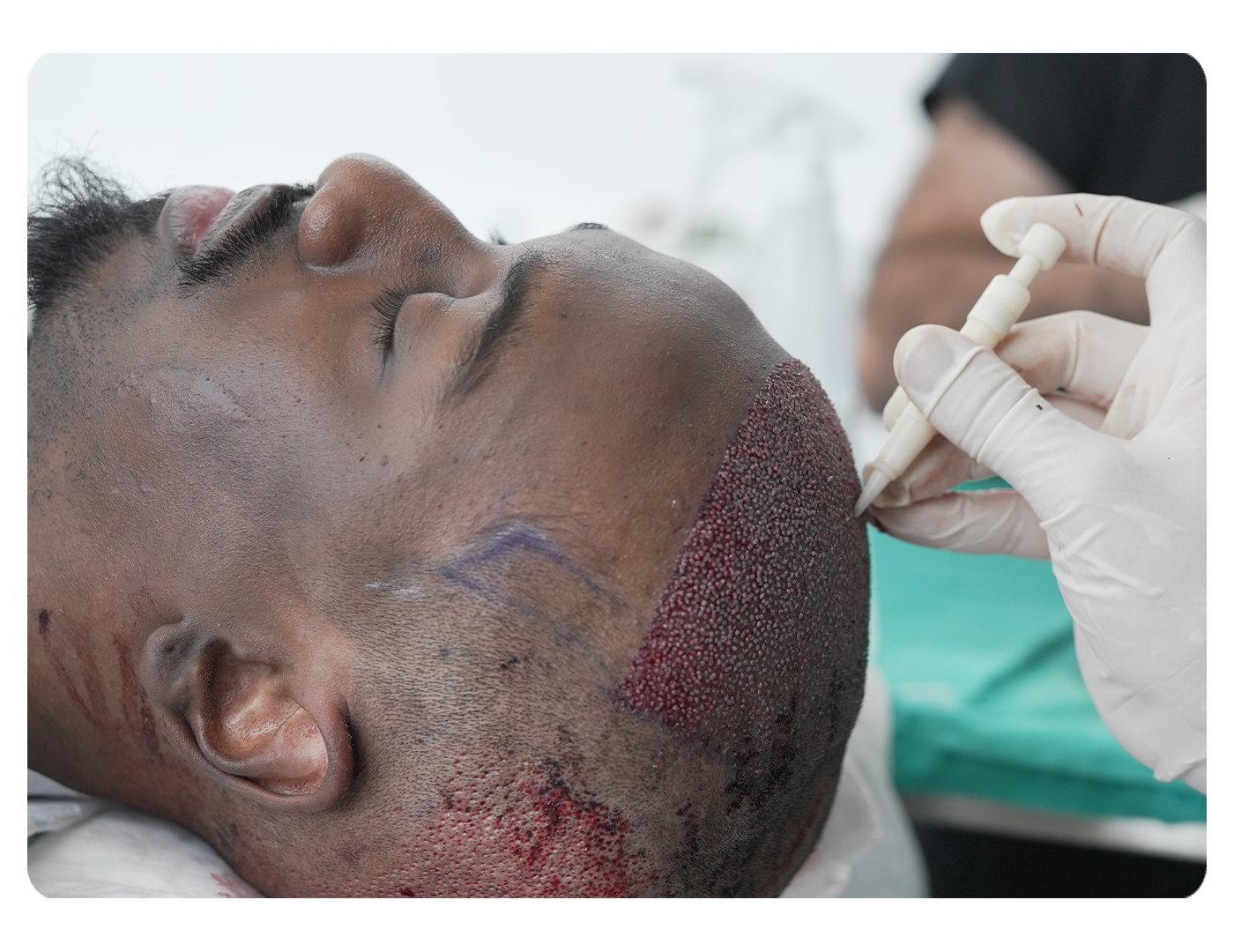
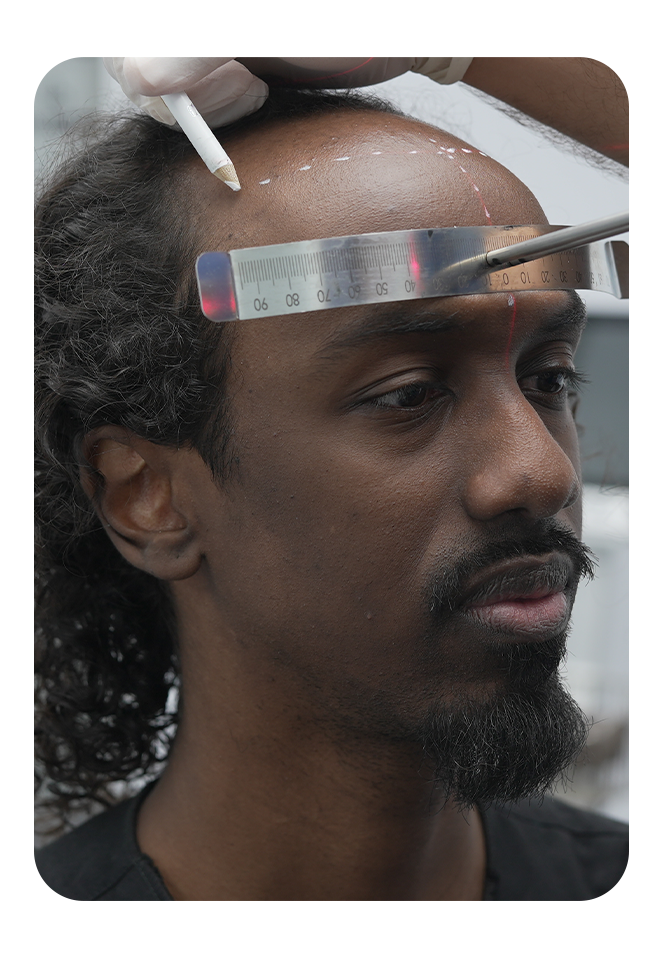
The Rise of Direct Hair Implantation (DHI)
While FUE remains a popular choice, Direct Hair Implantation (DHI) has emerged as the preferred method for African American hair transplantation. DHI is a refined version of the FUE technique, where the extracted hair follicles are directly implanted into the recipient area using a specialized tool called a Choi Implanter Pen. This pen allows for greater control over the angle, depth, and direction of each hair follicle during implantation, which is particularly beneficial for Afro-textured hair.DHI offers several advantages, including reduced handling of hair grafts, which minimizes the risk of damage, and the ability to achieve higher density with more precise placement of follicles. Given the unique curl and texture of African American hair, the precision and control offered by DHI make it the most suitable method for achieving natural and aesthetically pleasing results.
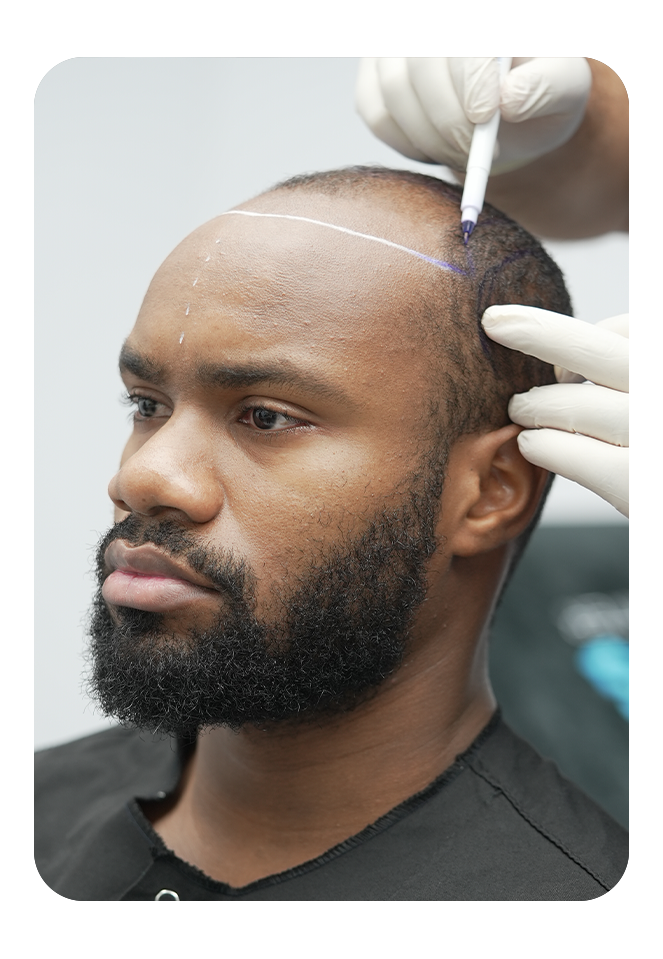
The Rise of Direct Hair Implantation (DHI)
pages.afro.p1_3
The Complexity of Extracting Afro-Textured Hair Grafts
One of the most significant differences between African American hair and other hair types is the unique structure of Afro-textured hair. Unlike straight or wavy hair, Afro hair is curly both above the skin's surface and beneath it. This characteristic makes the extraction of hair grafts more complex and requires a more meticulous approach.When performing hair transplants on individuals with straight hair, the punch device used for extraction typically has a diameter of 0.9 mm and a length of approximately 4 mm. This straight rotating punch is sufficient for extracting hair follicles in a non-curly pattern. However, this tool is not suitable for Afro-textured hair due to the hair’s natural curl beneath the skin’s surface. The curliness of Afro hair follicles under the skin means that using a standard punch could damage the follicles, leading to a lower success rate and potentially harming the overall outcome of the transplant.To accommodate the curly nature of African American hair, the punch used for extraction must be adjusted. Specialists often employ a punch with a shorter length and a modified diameter that aligns with the curl pattern of the hair follicle. This adaptation allows for the safe extraction of the grafts, ensuring that they remain intact and healthy, which is crucial for the success of the transplant. . .
When performing hair transplants on individuals with straight hair, the punch device used for extraction typically has a diameter of 0.9 mm and a length of approximately 4 mm. This straight rotating punch is sufficient for extracting hair follicles in a non-curly pattern. However, this tool is not suitable for Afro-textured hair due to the hair’s natural curl beneath the skin’s surface. The curliness of Afro hair follicles under the skin means that using a standard punch could damage the follicles, leading to a lower success rate and potentially harming the overall outcome of the transplant.

The Importance of Expertise and Experience in African American Hair Transplantation
Given the complexity of extracting Afro-textured hair, the experience and expertise of the surgeon play a pivotal role in the success of the procedure. An experienced hair transplant specialist who is well-versed in the nuances of Afro hair is essential for achieving optimal results. The process of extracting hair grafts from Afro-textured hair is significantly more delicate and time-consuming, as each graft must be carefully removed one by one to prevent breakage or damage.
The success of the transplant is highly dependent on the number of healthy grafts that can be extracted. In the case of African American hair, it is possible to extract between 3,000 to 3,500 hair roots per session using the modified punch technique. While this number may be lower than the average graft count for straight hair, the unique nature of Afro hair provides an advantage when it comes to post-transplant density.
The Advantage of Afro Hair in Achieving Greater Density
Afro-textured hair has a distinct advantage over straight hair types when it comes to achieving density after transplantation. Due to the natural curl and thickness of Afro hair, fewer grafts are needed to create the appearance of fullness. In a recent study, it was observed that 3,500 grafts in an African American hair transplant could produce results equivalent to 5,000 grafts in a patient with straight hair. This means that African American patients can achieve the desired density with fewer grafts, making the procedure more efficient and often more cost-effective.
However, the key to achieving this density lies in the quality and health of the extracted grafts. If the grafts are damaged during extraction, the success rate of the transplant diminishes, leading to less satisfactory results. Therefore, it is imperative that the surgeon handling the procedure has substantial experience and a deep understanding of Afro-textured hair. The careful and precise extraction of each graft ensures that the hair roots remain viable, leading to better growth and a more natural looking result post-transplant.
Hair transplantation in African American patients is a specialized field that requires a nuanced approach due to the unique structure of Afro textured hair. The complexity of the procedure, from the modified extraction techniques to the careful handling of grafts, underscores the importance of choosing a highly skilled and experienced hair transplant specialist. While the process may be more challenging and time consuming compared to non-curly hair transplants, the results can be equally, if not more, rewarding. Afro hair's natural density and curl pattern provide distinct advantages, allowing patients to achieve a fuller, more natural look with fewer grafts. However, this success hinges on the expertise of the surgeon, making it crucial for patients to seek out professionals who are well-versed in the intricacies of African American hair transplantation.
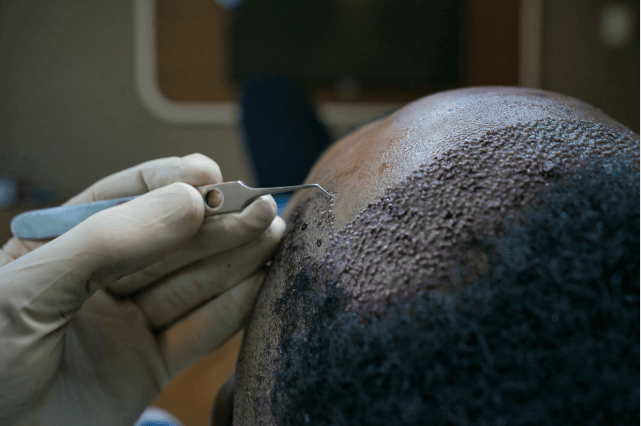

FREQUENTLY_ASKED_QUESTIONS
The hair grafts are extracted from the backside of the head, which we determine as between two ears and above the neck. The reason for choosing this specific area as a donor (extraction zone) is that the hair grafts in this region are genetically encoded against inherent hair fall. If the extraction process from this region is performed with better quality artistry, hair fall will never occur for a lifetime. Therefore, we take the hair grafts from the backside of the head, which we call the donor area.
The hair roots are homogeneously extracted one by one with the help of the latest technology system called the FUE method. After the process is over, the hair will never grow the place taken from since it is taken with its root, but it will not be visible since it is done with cater-corner homogeneously
After the hair transplant has been done, our medical consultant assistant will, without stint, follow the whole process with you until you achieve the best result. We will describe to you the growth process of all the hair grafts, respectively.
1-On the 10th day, the process of cleaning scabs will be done.
2-After one month, implanted hair begins to shed moderately.
3-The implanted hair enters the shock hair loss during the 2nd, 3rd, or 4th month, called the resting phase. During this process, you will face a view as if no hair transplant has been done.
4-At the end of the 4th month, the implanted roots will gradually start to grow progressively, and each month will grow faster and more hair than the previous month.
5-In the 7th month, almost 70% of the transplanted hair ultimately grows.
6-All transplanted hairs may take 12 months for the front zone and 14 months for the crown region to grow
The regrowth period of the transplanted hair may vary from person to person. It is a fact that hair roots come out earlier or later than expected, depending on a person's habits such as smoking, alcohol, drugs, and eating habits.
We, as the Long Hair Center family, care about your having a pleasant time in Turkey. Therefore, your 1 family member or friend can come with you, and there is no extra charge like hotel and airport transfer.
Before the hair transplantation, the estimated number of hair grafts is given after the evaluation of pictures by doctor. We do not want to raise expectations too much, as the pictures can often mislead hair transplant doctors. Therefore, we do not want to give you the wrong information by saying a little less than the number of grafts we can implant. However, we work with the maximum number of hair grafts in every operation. While performing this extraction process, it is done completed by paying attention to the homogenization without harming the donor area. The number of grafts is essentially determined by the size of the person's planting area and the quality of the donor area. Of course, it is imperative how many grafts will be implanted, but implantation in good health is at least as necessary as the number of grafts. The grafts are found in groups in the donor area; they will come out simultaneously if you extract and implant them with their group. But if you cut these grouped grafts, for example, if you extract a graft with three hairs, reducing the number of hair strands to 2 or 1 will not be a successful hair transplant. No matter how high the number of grafts is, it is impossible to achieve a successful planting if they are not taken in good quality.
The hair transplant operation does not have a fixed duration of time. Depending on the grafts need of a person, this time period can be extended or shortened. The higher the number of roots, the longer the operations will take, and the longer the operation time. A healthy hair transplant should take a minimum of 6 hours and a maximum of 10 hours. This is the ideal time duration for both; patient's well-being and the graft's survival period.
People who are not satisfied with their first operation results, think that it is sparse, or whose donor area is too weak to achieve that number of hair grafts (to cover all the entire bald zone in one session) can have two operation sessions. 2nd session of hair transplantation is wholly related to the quality and abundance of the hair in the person's donor area. There is no problem if the number of hair grafts is sufficient to conduct the operation of a person who will have the second operation. However, if there is too much damage in the first session and the donor area is harmed enough to extract grafts again, performing the second session operation is not recommended. It will cause more damage to the donor area. You can have more transparent information about this situation when you show your pictures or direct examination to your hair transplant doctor.
Those who cannot have a hair transplant for the second time?
1.People whose donor area is damaged too much during the first session.
2.People who do not have enough hair in their donor area to cover enough broad recipient area.


 Deutsch
Deutsch
 English
English
 français
français
 italiano
italiano
 Türkçe
Türkçe
 русский
русский
 한국어
한국어



